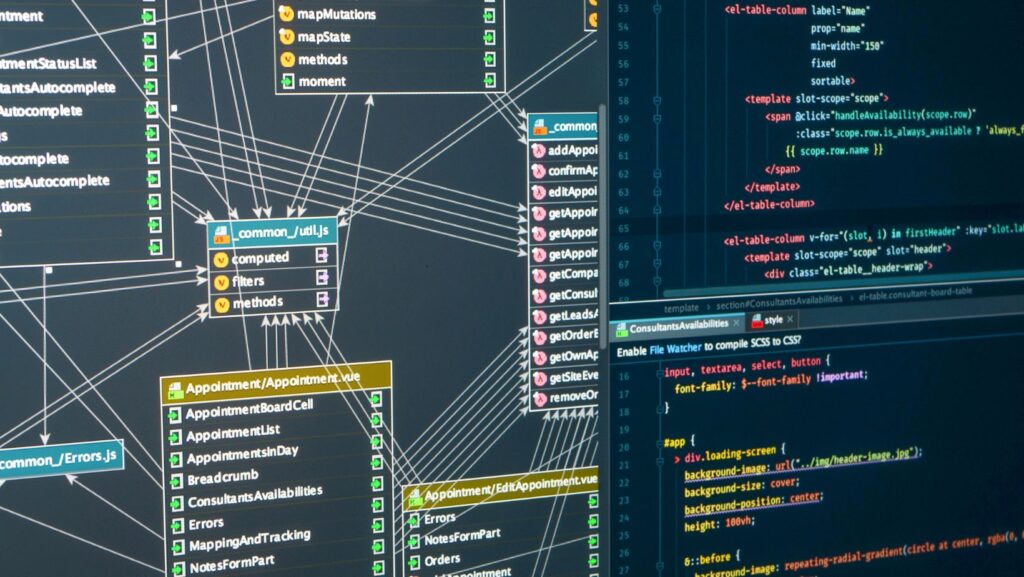
The digital world is often admired for its sleek designs, interactive interfaces, and seamless user experiences. Yet, beneath every intuitive front-end lies a sophisticated and often underappreciated infrastructure built by back-end developers. These professionals ensure that applications run smoothly, process data efficiently, and maintain security protocols. Despite the rise of automation and AI-driven tools, back-end developers remain irreplaceable in the world of technology.
The Backbone of Every Application
Every functional application, whether a mobile app, website, or enterprise software, relies on the back end to handle data processing, server communication, and business logic. While front-end developers create the interface users interact with, back-end developers ensure that every click, input, and interaction triggers the correct response from the system.
Back-end developers work with databases, APIs, and server-side logic to keep applications running. Their role includes managing server performance, writing optimized algorithms, and ensuring data integrity. Without this foundational layer, even the most visually stunning websites and apps would be non-functional. They make sure that when you book a flight, process a payment, or send a message, the system correctly stores and retrieves the necessary information.
Additionally, back-end developers must navigate an ever-growing landscape of programming languages, frameworks, and technologies to build efficient and scalable applications. From traditional relational databases like MySQL and PostgreSQL to NoSQL databases like MongoDB, they make informed decisions on how to store and manage data based on the unique requirements of each project. Their ability to adapt to new tools and technologies ensures that applications remain competitive and efficient in a rapidly evolving industry.
Security and Data Integrity
Cybersecurity threats are evolving daily, and businesses must constantly guard against data breaches, unauthorized access, and system failures. Back-end developers play a crucial role in securing applications by implementing encryption protocols, access controls, and robust authentication mechanisms.
With businesses handling vast amounts of sensitive information—whether customer data, financial records, or proprietary business processes—the responsibility of back-end developers extends far beyond coding. They design databases that protect against SQL injection, enforce security policies, and create backups to prevent data loss. These efforts ensure that businesses maintain trust with their customers and avoid devastating security breaches.
Furthermore, compliance with international data protection regulations such as the General Data Protection Regulation (GDPR) and the California Consumer Privacy Act (CCPA) is a major concern for organizations worldwide. Back-end developers implement solutions to ensure compliance with these laws, safeguarding user privacy and avoiding legal penalties. Their expertise in handling secure authentication mechanisms, like OAuth, multi-factor authentication (MFA), and token-based security, adds an extra layer of protection to modern applications.
Customization and Scalability
No two businesses are alike, and their software needs often differ significantly. Pre-built solutions may offer convenience, but they lack the customization and flexibility required for scalability. Back-end developers create tailored solutions that align with an organization’s unique goals, infrastructure, and growth plans.
As businesses expand, their technological demands increase. A start-up that initially supports a few hundred users may grow to serve millions, requiring adjustments in database management, load balancing, and cloud infrastructure. Back-end developers anticipate these challenges and build scalable architectures that prevent slowdowns, crashes, or data inconsistencies as demand surges.
Cloud computing services like AWS, Google Cloud, and Microsoft Azure provide scalable solutions, but without the expertise of back-end developers, businesses would struggle to deploy these platforms efficiently. Serverless computing, containerization (e.g., Docker, Kubernetes), and microservices architecture are becoming more prevalent, and back-end developers are responsible for designing, implementing, and maintaining these complex infrastructures.
Problem-Solving and Innovation
While front-end development focuses on user experience, back-end development is where the problem-solving magic happens. Many business challenges require custom solutions that can’t be resolved with off-the-shelf software. From optimizing algorithms for faster processing to integrating multiple third-party services, back-end developers are constantly innovating to improve system performance and functionality.
One example is the rise of artificial intelligence and machine learning. These technologies rely on complex data processing and computing power, which back-end developers optimize through efficient databases, cloud computing, and server management. Even as AI automates many development tasks, back-end developers remain essential for overseeing and refining these systems.
Moreover, as businesses embrace the Internet of Things (IoT), blockchain, and edge computing, back-end developers are tasked with building the infrastructure that allows these technologies to function effectively. Their ability to create and manage distributed systems ensures that applications run smoothly across different devices, platforms, and networks.
The Role of Back-End Developers in a Team
Software development is a team effort, and back-end developers collaborate closely with front-end developers, designers, and project managers. Their role is to bridge the gap between what the user sees and how the system processes that data. Without their expertise, cross-functional teams would struggle to create seamless experiences that function across different devices and platforms.
Additionally, back-end developers work with DevOps professionals to deploy and maintain applications in production environments. Their responsibilities include monitoring server performance, identifying potential system bottlenecks, and ensuring uptime. As businesses increasingly rely on cloud services, these developers also manage integrations with platforms like AWS, Azure, and Google Cloud.
Back-end developers are also instrumental in continuous integration and continuous deployment (CI/CD) pipelines, automating the software release process to ensure rapid, reliable delivery of updates. Their understanding of monitoring tools like Prometheus and Grafana, along with their ability to optimize performance through database indexing and caching strategies, makes them indispensable.
The Misconception About Automation
With the rise of AI and low-code platforms, some fear that back-end development will become obsolete. However, these tools are designed to assist, not replace, human expertise. While automation can generate code snippets and handle repetitive tasks, it lacks the ability to architect complex systems, troubleshoot nuanced errors, and ensure long-term scalability.

AI-driven development tools may streamline workflows, but they still require back-end developers to fine-tune performance, oversee security measures, and manage system integrations. The expertise of a skilled back-end developer goes beyond writing code—it involves critical thinking, decision-making, and adapting to ever-changing technology landscapes.
A Promising Career Path
Given their importance in the software industry, back-end developers remain in high demand. Companies worldwide seek professionals with expertise in programming languages such as Python, Java, Ruby, and Node.js, as well as experience with databases, cloud services, and API development.
For those considering a career in technology, back-end development offers a fulfilling path with job security, competitive salaries, and opportunities for innovation. Whether working for a start-up, a tech giant, or as a freelancer, back-end developers have numerous options to advance their careers.
If you’re looking to explore career opportunities in this field, platforms like Crossover provide access to global back-end development roles with top companies. With businesses continuing to invest in digital transformation, the need for skilled back-end developers is only set to grow.
Conclusion
Back-end developers are more than just coders—they are architects of the digital world. They build, secure, and optimize the infrastructure that powers modern applications. While AI and automation are advancing, they are tools that complement rather than replace human expertise.
As long as technology evolves, the need for skilled back-end developers will remain strong. Their work ensures that businesses operate efficiently, users enjoy seamless digital experiences, and applications scale to meet future demands. In a world increasingly reliant on digital systems, back-end developers will always be irreplaceable.


